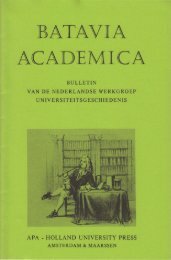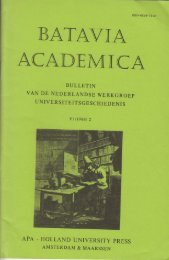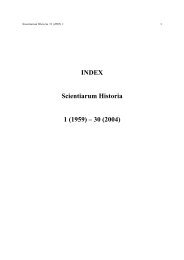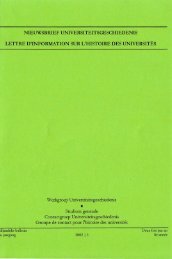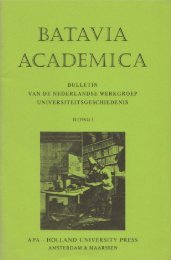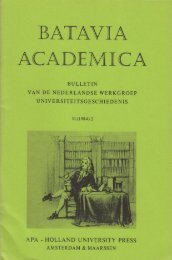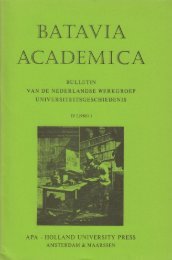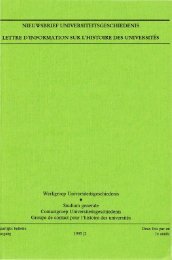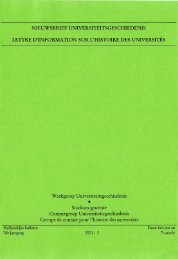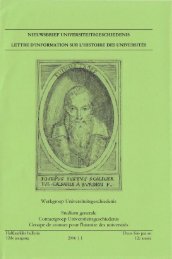EXPORTING SCIENTIFIC INSTRUMENTS AROUND 1700 - Gewina
EXPORTING SCIENTIFIC INSTRUMENTS AROUND 1700 - Gewina
EXPORTING SCIENTIFIC INSTRUMENTS AROUND 1700 - Gewina
Create successful ePaper yourself
Turn your PDF publications into a flip-book with our unique Google optimized e-Paper software.
116 Peter de Clercq<br />
other documents make it clear that Dorstenius bought virtually everything his<br />
Leiden supplier was offering. And considering Musschenbroek's position in<br />
experimental science there is no reason to think that Dorstenius would have had<br />
a better set if he had turned to another specialist maker.<br />
The Marburg documents are the most informative source yet found on the<br />
business aspects of the Musschenbroek workshop, and probably of any early<br />
scientific instrument-making workshop. Its repertoire during the period 1694 to<br />
1703 is revealed in considerable detail. Johan van Musschenbroek emerges as a<br />
pioneer in marketing techniques: he was the first instrument maker to issue a<br />
priced trade catalogue. He was alert on extending his repertoire, displaying a<br />
good sense of what the market was ripe for. Thus, he launched a low-budget airpump,<br />
of which he seems to have been rather proud. When sitting to a painter<br />
he chose to be represented with it, and not - as his sons were to do later -<br />
with the workshop's most impressive instrument, the large and ornate diagonal<br />
air-pump.'" We also learn something about the way Musschenbroek organized<br />
his business. Thus, he put out work to contract to glass-works outside Holland,<br />
to unnamed painters in Leiden and Amsterdam and to the clock-maker Bernhard<br />
van der Cloesen in The Hague.<br />
Dorstenius paid some Hfi 700 to Musschenbroek for his instruments. Even if<br />
we subtract the money spent on items unrelated to his physics teaching, such as<br />
the anatomical and surgical instruments, the invested sum remains impressive.<br />
Hcilbron, comparing the expenditure on required apparatus to professorial<br />
incomes, estimates that the cost of a full set of instruments in the 1730's was<br />
about equal to the annual income of a well-paid professor of physics.'"* It is<br />
obvious that for Dorstenius too the instruments were a considerable investment,<br />
the more so as he was emphatically not a well-paid professor. In fact, for<br />
assuming the extra burden of teaching physics he was only granted a disappointingly<br />
low rise of salary of 40 German guilders (roughly equivalent to 50 Dutch<br />
guilders""), and even these he only began to receive well after acquiring the<br />
bulk of his instruments. The conclusion must be that Dorstenius' prime motive<br />
for acquiring his instruments was his own enthusiasm, rather than a realistic<br />
expectation for a return from salary rise. Or did he make money on the side by<br />
giving private lectures with his 'costly machines' from Holland?<br />
Finally, what became of the Musschenbroek instruments in Marburg?'"*<br />
The large diagonal pump was chosen, with a set of Magdeburg hemispheres suspended from<br />
a tripod, as requisite for the double-portrait of Jan and Petrus van Musschenbroek, painted in 1715<br />
by Hieronymus van der Mij, which is in the Museum Boerhaave.<br />
Heilbron (n. 21), Elements of early physics, p. 146.<br />
Private communication from Arent Pol. Royal Cabinet of Coins and Medals, Ixiden.<br />
'"* This last paragraph is based on Schmitz (n. 5), Die physikalische Gerdlesammlung.



